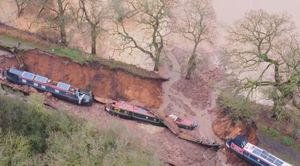On Friday, November 14, 2025, the ancient stones of Stonehenge will witness a different kind of gathering—one not of druids or tourists, but of determined individuals braving the night air to support a cause that’s grown ever more urgent. Local-based charity Alabaré is calling on supporters to join the BIG Sleep at Stonehenge, an event designed to raise funds for homeless veterans as the need for help among former military personnel reaches alarming new heights. With only 200 places available, each participant is asked to raise at least £175, aiming to make a tangible difference for those who once served their country and now find themselves without a home.
The numbers paint a stark picture. According to government figures cited by Alabaré, one in every 400 former military personnel is now classed as homeless. That equates to an estimated 6,000 veterans across the UK in urgent need of accommodation support. And the situation is worsening: the charity has received over 350 referrals in the past year alone, representing a staggering 122% increase compared to 2024. Meanwhile, rough sleeping in England has soared by 91% over the last three years, underscoring a crisis that shows no sign of abating.
For many, Stonehenge is a symbol of endurance and history, but for the night of November 14, it will also stand as a beacon of hope. The event, run in partnership with English Heritage, invites participants to spend one night outdoors at the iconic monument. Their efforts will help fund Alabaré’s Homes for Veterans services, which operate across the South West of England and Wales. These services don’t just provide a roof over someone’s head—they offer safe accommodation, vital mental health support, and crucial pathways to independence for veterans who may be struggling to find their footing in civilian life.
Where does the money go? Alabaré is transparent about the impact each donation makes. For £25, a veteran entering supported housing receives a welcome pack—often their first step toward stability. A £50 donation covers a one-to-one mental health support session, while £100 provides a week’s worth of food and essentials. The full £175, which each BIG Sleep participant is asked to raise, funds a week of supported accommodation and care. In a world where every pound can make a difference, these figures offer a clear roadmap for supporters eager to see their contributions put to work.
“The BIG Sleep will be a history-making show of support for veterans in an area closely connected with the armed forces,” Alabaré says. And indeed, the South West of England has long been intertwined with military history, making Stonehenge a fitting location for such a symbolic act of solidarity. The charity encourages anyone interested to sign up or find out more at their website, and for those in urgent need, Alabaré offers information on referral routes and support services.
But as hundreds prepare to sleep under the stars for a noble cause, another issue looms over the Wiltshire landscape—the ongoing debate over the A303, the busy road that runs past Stonehenge. For decades, the question of how to improve traffic flow and preserve the tranquility of the area has divided local residents, government officials, and heritage advocates alike. According to a letter published in the Salisbury Journal on September 23, 2025, Wiltshire Council has long failed to take practical steps to address the mounting traffic problems in nearby villages, even as discussions about building a tunnel beneath Stonehenge have dragged on for years.
The Stonehenge Alliance, a coalition of preservationists and concerned citizens, has put forward a number of practical proposals to improve traffic flow—ideas that, according to the letter’s author, deserve serious consideration. “Far from being totally negative, I see the Stonehenge Alliance has put forward a number of practical ways to improve the traffic flow. Has anyone else?” asks Suzanne Keene of Castle Street, urging readers to check the group’s website for details.
Yet the prospect of constructing a tunnel brings its own set of headaches. The letter highlights the potential for massive disruption during years of construction, painting a vivid picture: “Don’t even think about the traffic disruption there would be during years of construction, the 78 lorry loads an hour of taking spoil to dump by the National Nature Reserve at Parsonage Down, the carbon emissions there would be from such a massive construction project.” The environmental impact is a major concern, with fears that such an undertaking would generate significant carbon emissions and disturb the delicate balance of the local ecosystem.
Underlying all these debates is the importance of protecting the archaeology of Stonehenge itself. The letter’s author does not mince words, emphasizing the global significance of the site: “This is the most famous archaeological site in the world, and it would be to our shame if we damaged it irreparably. We do care about our standing in the world, don’t we?” The distinction between rescue archaeology—often rushed and conducted under the pressure of impending construction—and research archaeology, which is more thorough and deliberate, is also highlighted. The implication is clear: any project that risks the site’s integrity must be approached with the utmost caution and respect for its historical value.
As the community grapples with these intertwined issues—supporting vulnerable veterans and safeguarding a world-renowned heritage site—it’s clear that Stonehenge remains at the heart of both local action and national debate. The upcoming BIG Sleep event is a testament to the power of collective effort, showing that even in the face of rising homelessness and social challenges, people are willing to come together for a cause that matters. At the same time, the ongoing controversy over the A303 and the future of Stonehenge’s surroundings serves as a reminder that progress and preservation must go hand in hand, and that every decision made here reverberates far beyond Wiltshire’s borders.
For now, as November approaches, all eyes are on Stonehenge—not just as a prehistoric wonder, but as a place where modern struggles and ancient stones meet. Whether it’s the quiet resolve of those sleeping out to support veterans or the passionate voices advocating for careful stewardship of the land, this corner of England continues to inspire action, reflection, and, perhaps, a little hope for the future.




